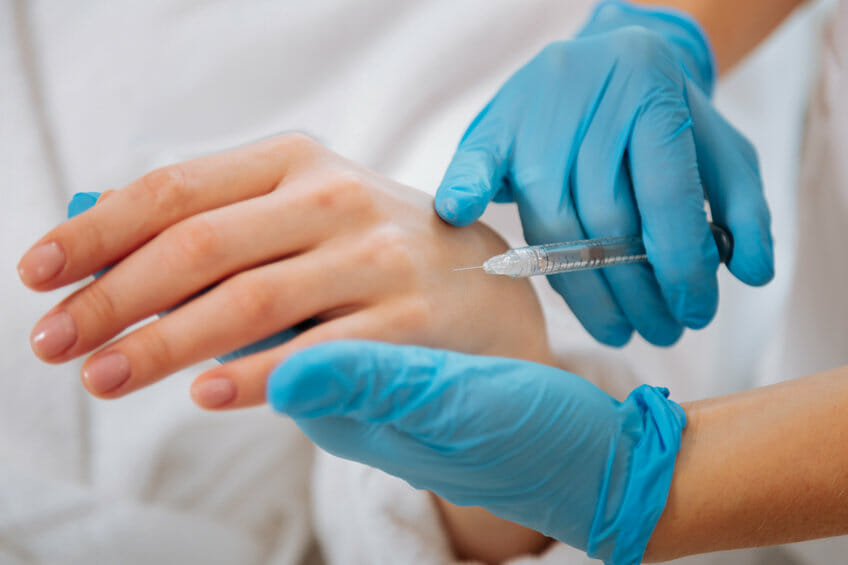Plastic surgery and in-office procedures are increasingly popular because they allow for faster results and are less invasive. In this evolution of plastic surgery, filler injections are widespread for non-permanent enhancements such as a “liquid facelift” or plumping lips. The latest trend using fillers is for “hand lifts.”
Dr. Pablo Prichard, a board-certified plastic surgeon in Scottsdale, provides his patients with hand lifts. This procedure consists of putting filler in the hands and can also be combined with supplementary procedures to reduce the look of aging. With age, hands lose their plumpness, and the skin thins, making veins and bones more visible.
READ ALSO: Scottsdale plastic surgeon becomes viral TikTok sensation
“There are so many procedures for other parts of the body, and the hands can be neglected. Somebody gets a facelift, and their face and neck look great, but they’re wearing clothes, and they look down and see that their hands still look aged while their face looks younger,” Prichard says.
The primary way surgeons address this issue is by using fat grafts. That procedure is more intense, patients go under anesthesia, and then fat is liposuctioned for a part of the body, purified and then used in the hands. There is a longer recovery time associated with this procedure.
It is also harder to protect the hands compared to the face. Even if sunscreen is applied to the hands, it will wear away while washing the hands and other activities. One way to prevent that is to carry around sunblock and reapply throughout the day, but that can be unrealistic for some people.
“While driving along, your hands are on the steering wheel, it’s constant sun and impact from the Phoenix sun on your hands, aging them,” Prichard explains.

Along with the filler, other treatments such as laser and microneedling with radiofrequency technology can help reduce the looks of aging in hands. Laser treatment helps reduce sunspots, and the microneedling works by slightly injuring the hand, sending the body a signal to repair and fortify the area, making skin produce more collagen.
The filler used is hyaluronic acid, a natural substance in the body, and this cuts down on concerns about adverse reactions.
“Twenty years ago, it was that the fillers used were bovine collagen. That is not a natural substance in your body – it’s derived from a cow.” Prichard explains. “We would do a test spot on a patient before the procedure. They would come in a week or two before their appointment and get a test by injection to see if there’s an allergic reaction.”
Dr. Prichard explains that while results last six months to a year, they can last longer depending on the amount of filler used and how the body metabolizes it.
“There are many different forms of hyaluronic acid, and I tend to use one that’s a little bit more crosslinked. The more crosslinks there are in the molecules, the bigger the molecule is to the body. The bigger the molecule, the harder it is for the body to dissolve,” Prichard says. “If you’re injecting a fair amount, it takes a lot longer for your body to dissolve it because it’s only dissolving the peripheral portion of that material from the inside out.”
The main restriction that can reduce eligibility for the procedure are blood thinners regularly taken by patients. Dr. Prichard also recommends not taking any other medications that thin the blood within five days, such as aspirin, ibuprofen or fish oil.
“People on blood thinners would bruise and swell dramatically with these types of procedures. If you take any of that medication, you will have purple hands instead of youthful ones,” Prichard says.
This procedure is increasing in popularity, especially with people who may have had other procedures and want their hand to match their face and neck. For two syringes of filler, one for each hand, it would cost around $1,000.




